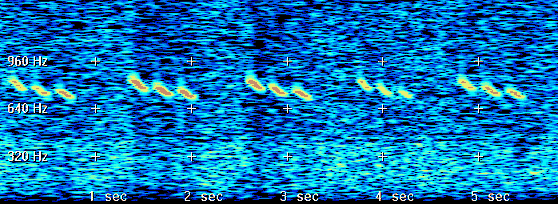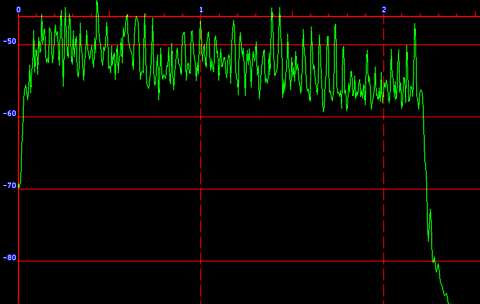
At the end of 2005, the frequency 8000 kHz (+/- about .9 kHz) became a rather strange place. The first spectrogram shows what is probably a pirate "S" beacon with a rather distinctive sound:

Note how the frequency drops as soon as the transmitter is keyed, both within the dits and over the duration of the character. This seems to be a characteristic of the circuit in use, because a similar beacon sending "W" on another frequency shows an even more pronounced downward drift, as would be expected from that character's longer duration. Both of these CW beacons also show a longer-term frequency drift over a period of days.
UPDATE 2009: The droopy beacons are characteristic of a type deployed by several HF hobbyists to test propagation at very low powers. The lowering frequency makes them easier to identify. One is called the Inyo Whooper. (Inyo is a county in California, and the Whooper is a bird found in the area.)
The next spectrogram is of a rather scary-sounding double databurst that transmits around 0.5 kHz lower:

Note the similarity of these transmissions (minus the funny cartoon voice) to the mysterious "Yosemite Sam" beacon that showed up on several frequencies exactly a year ago. Both show the initial evenly-spaced tones of around 0.7 seconds duration, followed by an unknown digital keying. It has been speculated that this might be a new military system under development, but nothing whatsoever is known for sure.

The peak-held signal-power plot of several combined bursts (to partially correct for selective fading) shows that the tones are indeed evenly spaced.
Since both signals can be heard at once, and fade independently of each other, there are probably two different transmitters going here. What does all this add up to? Why, just another shortwave mystery, that's what.